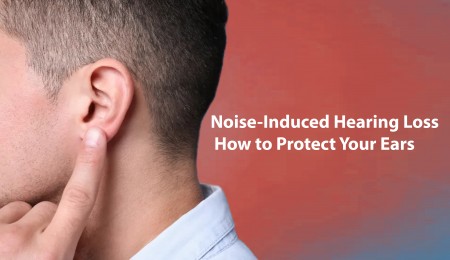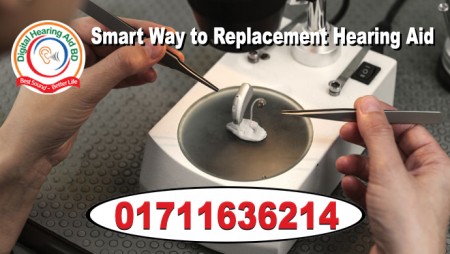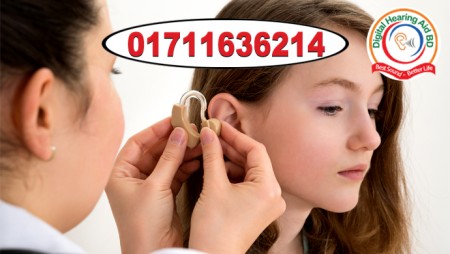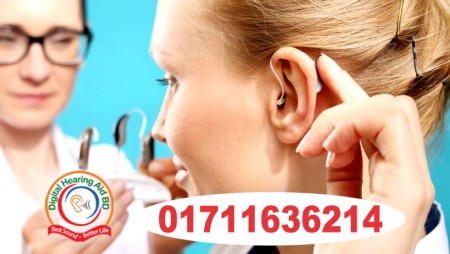
Noise-Induced Hearing Loss: How to Protect Your Ears
Noise-induced hearing loss (NIHL) occurs when your ears are exposed to loud noises over time or even a single very loud noise. It’s a common but preventable condition. Here’s how you can protect your ears and reduce the risk of NIHL:
1. Understand Dangerous Noise Levels
85 Decibels (dB) and Above: Noise levels at or above 85 dB can cause hearing damage over time. Common sources include heavy traffic, lawnmowers, and noisy workplaces. Sounds above 100 dB, like rock concerts or power tools, can cause damage in as little as 15 minutes.
Measure Noise Levels: Use smartphone apps or decibel meters to measure the noise level in your environment. If it’s consistently above 85 dB, take steps to protect your hearing.
2. Wear Hearing Protection
Earplugs: Use foam or custom-molded earplugs in noisy environments. These can reduce noise by 15-30 dB.
Earmuffs: Over-the-ear earmuffs are effective at reducing loud noises, especially in environments where you’re exposed to noise for long periods, such as construction sites or concerts.
Noise-Canceling Headphones: When listening to music or other audio in noisy places, use noise-canceling headphones. They allow you to hear clearly at lower volumes, reducing the need to turn up the sound.
3. Limit Exposure to Loud Noises
Take Breaks: If you’re in a loud environment, take regular breaks in a quieter space to give your ears a rest.
Follow the 60/60 Rule: When using earbuds or headphones, listen at no more than 60% of maximum volume for no more than 60 minutes at a time. This reduces the risk of hearing damage.
Distance Yourself: The farther you are from the noise source, the lower the risk. If possible, move away from loudspeakers or other loud noise sources.
4. Be Aware of Warning Signs
Ringing or Buzzing: If you experience ringing (tinnitus) or buzzing in your ears after exposure to loud noise, it’s a sign of potential damage.
Muffled Hearing: If sounds seem muffled or if you have difficulty understanding speech after being in a loud environment, your hearing might be temporarily impaired. Repeated exposure can lead to permanent loss.
5. Protect Your Ears During Hobbies and Work
Use Protective Gear: If you’re engaged in activities like shooting, using power tools, or attending loud events, always wear appropriate hearing protection.
Workplace Safety: Follow occupational safety guidelines and use provided hearing protection when working in noisy environments. Employers are required by law to provide hearing protection in environments over 85 dB.
6. Maintain Safe Listening Habits
Volume Control: Keep the volume at a safe level when using personal audio devices. If someone near you can hear your music, it’s too loud.
Avoid Loud Environments: Whenever possible, choose quieter environments for social gatherings. Avoid places where you have to shout to be heard.
7. Get Regular Hearing Check-ups
Annual Hearing Tests: If you’re regularly exposed to loud noise, have your hearing tested annually. Early detection of hearing loss can help prevent further damage.
Consult a Professional: If you suspect hearing loss or experience symptoms like ringing or muffled hearing, consult an audiologist or hearing specialist promptly.
8. Educate Others
Spread Awareness: Educate family, friends, and colleagues about the risks of noise-induced hearing loss and the importance of hearing protection.
Long-Term Benefits of Protecting Your Ears
Preserve Hearing: By taking proactive steps, you can preserve your hearing well into old age, maintaining better quality of life.
Avoid Hearing Aids: Protecting your ears now can help prevent the need for hearing aids or other interventions later in life.
Enjoy Better Communication: Good hearing is essential for effective communication, which is key to maintaining relationships and social well-being.
By following these tips and being mindful of your auditory environment, you can protect your ears from noise-induced hearing loss and maintain healthy hearing for years to come.






